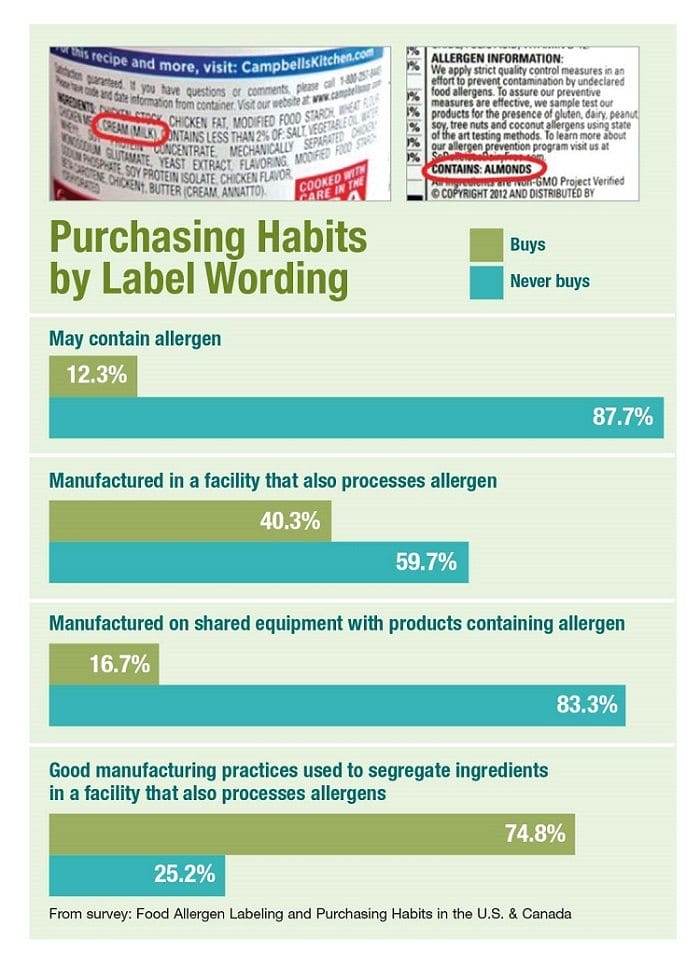Precautionary allergy labels are widely misunderstood and causing confusion. This in turn is leading to a lack of caution among consumers who live with food allergies, according to a study.
Researchers surveyed more than 6,600 food-allergic consumers and caregivers in the U.S. and Canada. They found that 12 to 40 percent of the respondents purchased food with precautionary labels such as “may contain peanut” or “manufactured in a facility that processes milk.”
“Parents are making their own risk assessments on which label is safe for their child, which they shouldn’t have to do,” says study author Dr. Ruchi Gupta, an associate professor of pediatrics at Northwestern University’s Feinberg School of Medicine.
“Parents need to know that precautionary allergen labeling like “may contain” is voluntary, so unless it says specifically “no nuts” or “no specific allergens,” it doesn’t necessarily mean it’s safe.”
The Food and Drug Administration requires manufacturers to clearly indicate if major allergens are ingredients of a product. But there are no legal guidelines on how companies should identify products that may have come into contact with food allergens during manufacturing. As a result, the wording and use of these precautionary labels is entirely up to individual manufacturers.
Assuming Allergy Labels’ Meaning
The survey results were presented at the AAAAI allergists’ conference in March 2016. They reveal that: 40 percent of consumers avoiding one or more allergens bought foods “manufactured in a facility that also processes allergens.” Yet only 12 percent bought foods with a “may contain” label. Beyond buying habits, the researchers also found a lack of awareness of labeling rules: 45 percent of respondents didn’t know that precautionary warnings are not required by law.

The consequences of allergic consumers ignoring such labels have proved tragic. Bruce Kelly, a 22-year-old with a peanut allergy, died of anaphylaxis in January 2016. He had eaten chocolate candy with a label that said it had been made in a plant that also processed peanuts.
“There are too many labels, and too many different types of wording,” says study co-author Dr. Susan Waserman. The professor of medicine in the division of allergy and immunology at McMaster University in Canada says: “Patients assume that differences in wording imply a lower level of risk, which they don’t.”
Seeking Clearer Definitions
Gupta and Waserman would like to see precautionary allergy labels reduced to one or two possible phrases with clear definitions. For instance, Gupta says if a “may contain” label meant that the food might have up to 100 milligrams of an allergen, then patients could work with their doctors to find out just how much of their allergen may be safe to consume and purchase foods accordingly. The study was published in the Journal of Allergy and Clinical Immunology.
In the meantime, the researchers advise patients to avoid products with precautionary labels. “It still seems to be the best way to maximize their safety,” says Waserman. The consumer surveys were conducted by FARE (Food Allergy Research and Education) and Food Allergy Canada.
Related Reading:
‘May Contains’ on Food Labels: What You Need to KnowHow to Read a Label When You Have Food Allergies
Advisory Labels: May Contain Confusion






